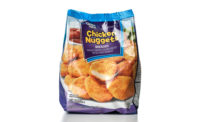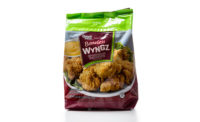Tech | Packaging
Form-fill-seal: practical and versatile

Form-fill-seal has moved steadily over the years to become a major packaging force for retail proteins. “It’s only rivaled by shrink bags,” declares one packaging veteran. “Certainly in North America it’s dominant largely on the flexible side.”
Its purview, once governed chiefly by red meat, has broadened to embrace a once-unassailable application. “I always said if you could turn poultry around and get it away from foam overwrapped trays and into form-fill-seal … I’m telling you, it dominates the cases, at least at club stores,” says an equipment systems expert. “I guess I had known about the volume of the business, but to see it in a store … look at all that vacuum-packed poultry.”
To be fair — and lightly tapping the brakes — tray overwrap and bags still rule the supermarket poultry case, but point taken.
The format’s practicality and versatility has enabled the industry to step up and bring some viable solutions to numerous wants and needs of end users. Over the past five years, store brands have honed their imaginations and dished out an impressive menu of options. “In many cases they’ve gone to unique offerings like meatballs, meatloaf, special marinades along with the protein or a dry rub or a ready meal all in form-fill-seal,” says the packaging pro. Packaging has become more specialized in customizing to address the whims of the 21st Century marketplace.
This leads right into another big thing: ecommerce. It is the new rich turf for the food industry, but the recent hard times we have experienced have sent the business into a frenzy. More portion packaging was needed to fit the distribution demands of meal kits. The protein is the primary piece, then one or more ingredients are portioned. There are processors who package small components such as a few olives, a clove of garlic or vegetables. “They pack a whole bunch of bits and pieces in form-fill-seal and send them to distribution centers who ‘kit’ them and then put the kit into an IQF. The product slacks out in the delivery cycle.” Convenience comes with a price, but if consumers are more comfortable for a while at home, this kind of restaurant fallback could be habit forming.
The availability of smaller, less-expensive thermoforming systems has lowered barriers to entry for small producers, not only lengthening the roster of market players, but also serving up a prominent differentiator. “I think skin materials have allowed you to have a different display of your product,” explains my equipment source. “Some of these new brands made their first investment in thermoforming. I’d challenge you to find a new product like ground buffalo or a ground natural/organic that isn’t done in a thermoform package.”
Modest players can make a difference. Like microbreweries, they develop their own followings.
Security and safety remain the primary concerns of the meat business, but safe delivery of products to consumers is even more heightened today. Whether form-fill-seal is hermetically sealed or MAP or vacuum packaging, its adaptability and availability make it a prominent choice for so many applications consumers are showing a preference for as they plan their meals. NP
Looking for a reprint of this article?
From high-res PDFs to custom plaques, order your copy today!







